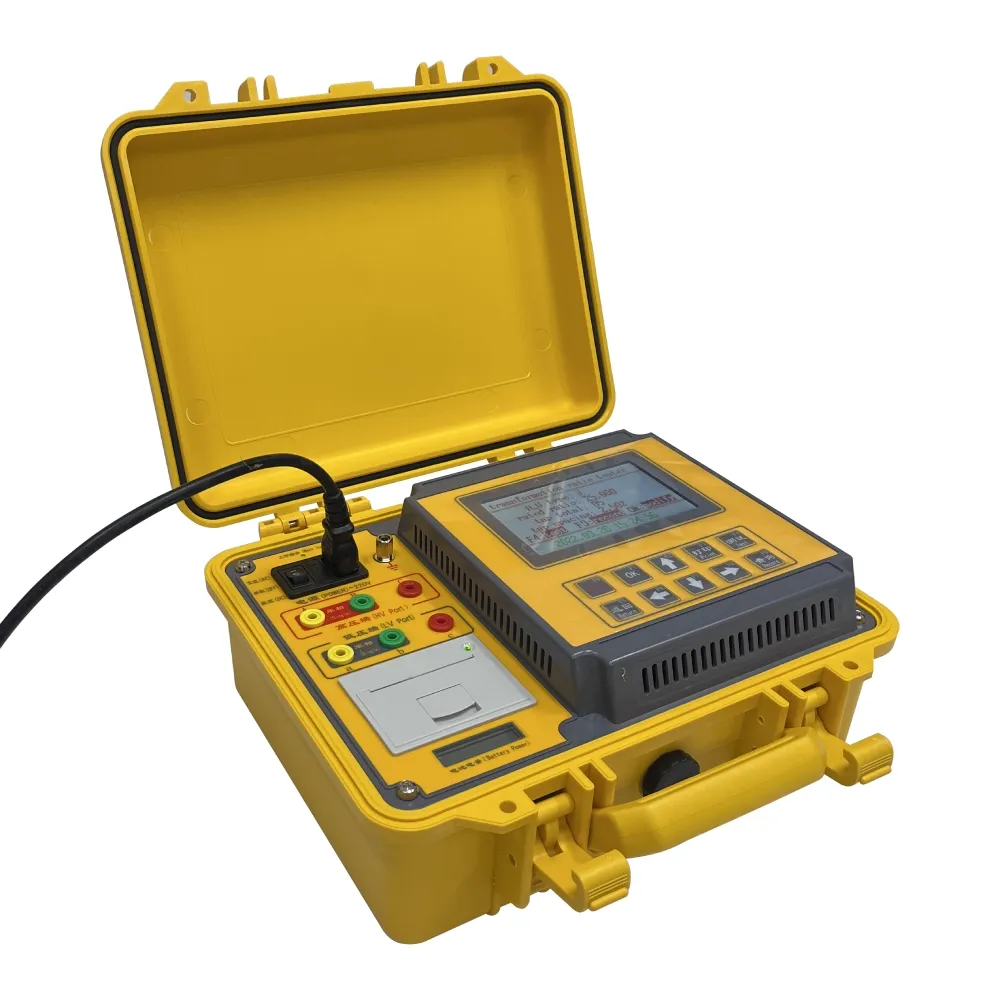 English
English


Understanding the Functionality of Dielectric Loss Measurement Devices for Materials Analysis
Understanding Dielectric Loss Meters Principles, Applications, and Importance
In the realms of electrical engineering and material science, the measurement of dielectric properties plays a critical role. Among the various instruments designed for this purpose, the dielectric loss meter is a pivotal tool. This specialized device quantifies the dielectric loss of materials, providing crucial insights into their insulating properties and performance in electrical applications. This article delves into the fundamental principles, applications, and significance of dielectric loss meters.
What is Dielectric Loss?
Dielectric loss refers to the energy dissipation that occurs when a dielectric material is subjected to an alternating electric field. Essentially, when an electric field is applied, the dielectric material polarizes, causing it to store electrical energy. However, not all of this energy is recovered; some is lost as heat due to various mechanisms such as dielectric relaxation and conduction. The measurement of dielectric loss is vital as it directly relates to the efficiency and reliability of electrical insulators, capacitors, and other dielectric materials.
Principles of Dielectric Loss Meter
A dielectric loss meter predominantly operates on the principles of capacitance measurement and the assessment of the loss tangent (tan δ). The loss tangent is a dimensionless quantity defined as the ratio of the dielectric loss to the stored energy in the material. The equation can be expressed as
\[ tan \delta = \frac{\text{dielectric loss}}{\text{dielectric storage}} \]
Dielectric loss meters typically employ two main methods to measure the dielectric properties the parallel plate method and the coaxial cable method. In the parallel plate method, the sample material is placed between two conductive plates, and an alternating voltage is applied. The resulting current flow is measured to determine the energy loss. In contrast, the coaxial cable method utilizes a cylindrical geometry to minimize edge effects and improve measurement accuracy, especially for liquid or granular samples.
Applications of Dielectric Loss Meters
Dielectric loss meters are employed in various industries and applications, including
dielectric loss meter

1. Material Testing Researchers and engineers use dielectric loss meters to evaluate the insulation properties of new materials. This is crucial for developing insulators, capacitors, and other electrical components.
2. Quality Control In manufacturing environments, dielectric loss meters provide an essential quality control check for materials. Ensuring that materials conform to specified standards can prevent costly failures in electrical systems.
3. Aging Analysis The dielectric properties of insulating materials can change over time due to environmental factors and operational stress. Dielectric loss meters help in assessing the aging of materials, allowing for proactive maintenance and replacement strategies.
4. Biomedical Applications In biomedical engineering, dielectric loss meters can analyze biological tissues for diagnostic purposes. The electrical properties of tissues can provide information about their health and state, aiding in the development of medical devices and therapies.
5. High Voltage Applications High voltage equipment, such as transformers and cables, relies on insulating materials to operate safely. Dielectric loss measurement helps monitor the dielectric integrity of these components, preventing electrical failures.
Importance of Dielectric Loss Measurement
The significance of measuring dielectric loss cannot be overstated. High dielectric losses can lead to overheating, reduced efficiency, and premature failure of electrical components. By providing accurate and reliable data on the dielectric properties of materials, dielectric loss meters enable engineers and scientists to
- Enhance Material Selection By understanding the dielectric losses of various materials, engineers can make informed decisions about suitable choices for specific applications. - Improve Device Performance Continuous monitoring of dielectric characteristics can help optimize the performance of electrical devices, ensuring they run efficiently under varying conditions.
- Ensure Safety Safety is paramount in any electrical application. Regular testing with dielectric loss meters ensures that insulating materials are functioning correctly, thereby reducing the risk of electrical hazards.
In conclusion, dielectric loss meters stand as a crucial instrument in the fields of electrical engineering and material science. Their ability to measure dielectric loss accurately aids in the design, testing, and maintenance of various electrical components, ensuring their efficiency and safety. As technology continues to evolve, the importance of these meters in both industrial and research settings will undoubtedly increase, paving the way for advancements in dielectric materials and their applications.
-
Differences between open cup flash point tester and closed cup flash point testerNewsOct.31,2024
-
The Reliable Load Tap ChangerNewsOct.23,2024
-
The Essential Guide to Hipot TestersNewsOct.23,2024
-
The Digital Insulation TesterNewsOct.23,2024
-
The Best Earth Loop Impedance Tester for SaleNewsOct.23,2024
-
Tan Delta Tester--The Essential Tool for Electrical Insulation TestingNewsOct.23,2024





